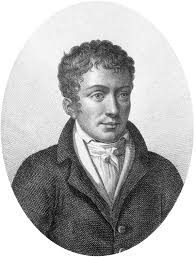|
In 1798, Sophie de Grouchy published her Letters on Sympathy. We know that she already had a draft in 1791, which she'd sent to her friend Dumont for feedback that never came. We know that the Letters were complete in 1794, and that they had a title, as Condorcet refers his daughter to them in his Testament. So why were they only published in 98? We don't know as she did not leave an account. But it's likely the answer lies either in need, opportunity or both. After the Terror, Sophie needed money, and she decided to translate Smith's Theory of Moral Sentiment. Smith was very popular, and existing translations of this text were not particularly good, so there was a clear gap in the market. This also gave her the opportunity to publish her own short text. Her Letters were after all a critique and commentary of Smith. So she appended them to the translation. Although the Letters are in fact a more like a treatise than a record of correspondence (there is in fact only one letter writer involved), each chapter is set out as a letter to someone addressed as C***, announcing the topic of discussion, linking it to the previous one, and at the end, drawing out the conclusions to be taken forward to the next chapter. C*** is also an excuse for considering objections to Grouchy's arguments, with many paragraphs starting with formulas such as "No doubt you will tell me, my Dear C***". So C*** is very much a philosophical interlocutor, the Platonic touchstone to Sophie's Socrates. So who is C***? The obvious assumption is that it is Sophie's husband, Condorcet. But there are reasons why this is probably not true. First, her husband was dead by the time the Letters were prepared for publication. Secondly, if Sophie was to record a fake dialogue with a real person then she would probably have picked someone she actually corresponded with - in 1791, when the letter were written, Sophie and her husband were not apart long enough to correspond. But there were at least two more Cs in Sophie's life, to whom she was very close, with whom she did correspond and who were still alive when the Letters were published. They were her sister Charlotte, and Condorcet's close friend, Pierre George Cabanis. Of the two, C*** cannot be Charlotte, as 'My Dear C***' in French is 'Mon Cher C***' which is masculin. So Cabanis is more likely. Cabanis, as it happens, did correspond with Sophie on topics very close to her Letters, on Physiology, a materialist science aiming to understand human beings through their bodily organs. In 1802, Cabanis published his Rapports du Physique et du Moral de l'Homme, in which he explores the relations between bodies and morality, discussing for instance, the influence of weather and digestion on mood and decision making. Prior to publishing this, he corresponded with Sophie, and had long discussions with her on the subject.
Physiology is also central to the Letters on Sympathy, as Sophy argues that our moral feelings are born out of the physiological response that ties a newborn to the person that nurses her and holds her. Cabanis and Charlotte de Grouchy became lovers during the Revolution, and in 1796, they were married. Some readers like to see a love story behind every text (in particular, texts written by women!) but in this case, we must suppose that C*** was very much an intellectual interest (and a close family friend) but not a love interest. Cabanis was by profession a doctor in medicine but did not practice. Some say that was because of his own poor health. Some say that he was in fact a spy, not a doctor. He is also reputed to have given Condorcet a dose of poison to hide in a ring. And this poison, in some accounts of Condorcet's death, is what he took to kill himself when he was captured in March 1794.
0 Comments
Leave a Reply. |
About
This is where I live blog about my new book project, an intellectual biography of three French Revolutionary women philosophers. Categories
All
Archives
November 2022
|


 RSS Feed
RSS Feed